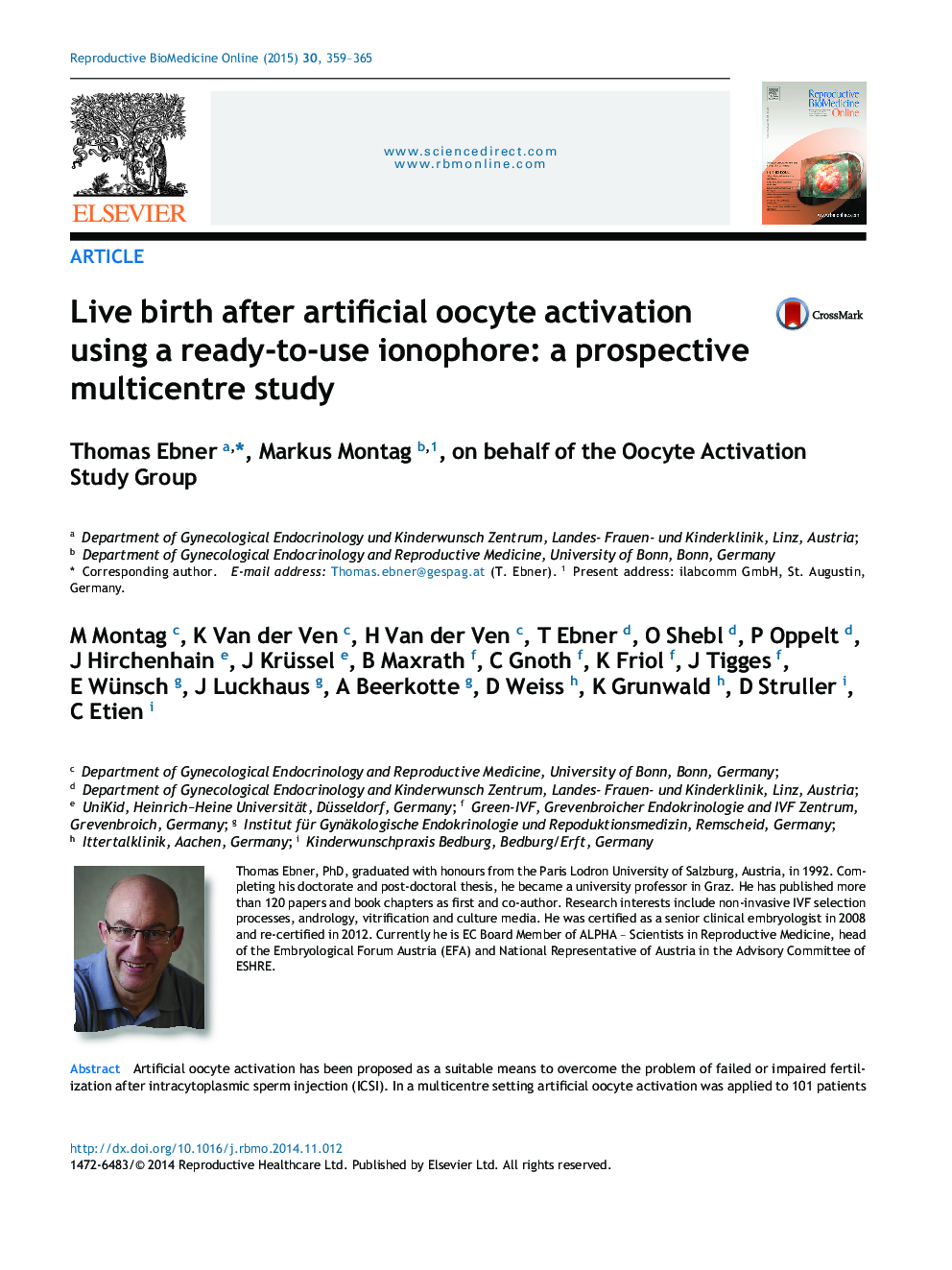| Article ID | Journal | Published Year | Pages | File Type |
|---|---|---|---|---|
| 3970080 | Reproductive BioMedicine Online | 2015 | 7 Pages |
Artificial oocyte activation has been proposed as a suitable means to overcome the problem of failed or impaired fertilization after intracytoplasmic sperm injection (ICSI). In a multicentre setting artificial oocyte activation was applied to 101 patients who were diagnosed with fertilization abnormalities (e.g. less than 50% fertilized oocytes) in a previous conventional ICSI cycle. Female gametes were activated for 15 min immediately after ICSI using a ready-to-use Ca2+-ionophore solution (A23187). Fertilization, pregnancy and live birth rates were compared with the preceding cycle without activation. The fertilization rate of 48% in the study cycles was significantly higher compared with the 25% in the control cycles (P < 0.001). Further splitting of the historical control group into failed (0%), low (1–30%) and moderate fertilization rate (31–50%) showed that all groups significantly benefitted (P < 0.001) in the ionophore cycle. Fewer patients had their embryo transfer cancelled compared with their previous treatments (1/101 versus 15/101). In total, 99% of the patients had an improved outcome with A23187 application resulting in a 28% live birth rate (35 babies). These data suggest that artificial oocyte activation using a ready-to-use compound is an efficient method.
